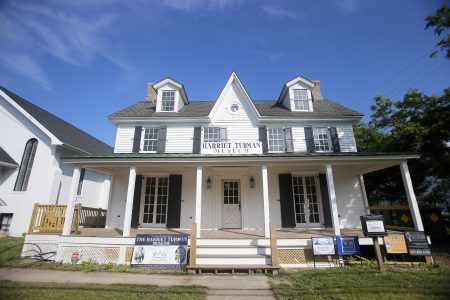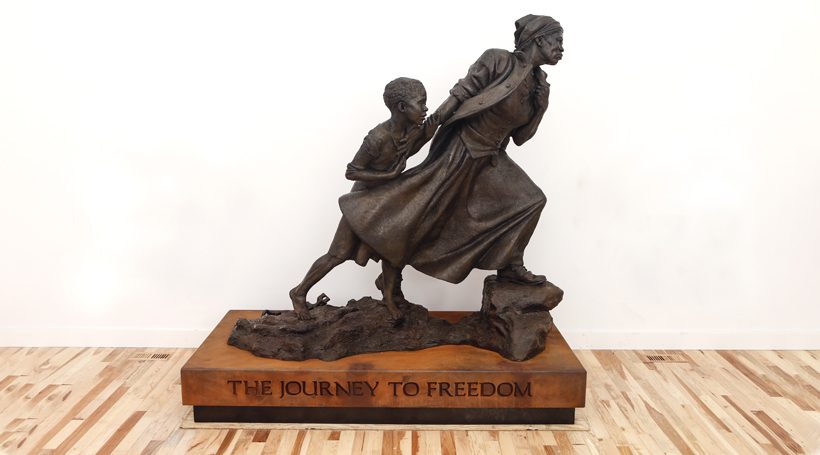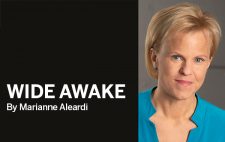The shores of New Jersey’s oldest resort town today are dotted with charming cobblestone streets and Victorian houses, but Cape May’s history is much deeper than that. More than 150 years ago, New Jersey’s most southern point was a beacon of hope for enslaved African Americans gazing over from the banks of Delaware, a slave state.
And what isn’t well known is that for 3 summers, Harriet Tubman – the famed abolitionist, escaped slave, and Civil War spy – spent time on these South Jersey banks, helping others escape to freedom. Tubman’s life is highlighted in Cape May’s newest museum.
Named one of the Smithsonian’s “Top 10 Most Anticipated Museums of 2020,” the Cape May Harriet Tubman Museum was set to open doors on Juneteenth – June 19th – a day that commemorates the end of slavery in the United States.
Although social distancing measures meant the museum couldn’t open physically to the public as planned, many attended a virtual opening that day. Lynda Towns, president of the Harriet Tubman Museum board of trustees, calls the timing of the opening nothing short of “divine intervention.”
“We’re in a moment in history where we need so much healing and a lot of listening,” says Towns. “It’s critical to me to make sure we tell this story from an African American perspective.”
The museum showcases historical objects and exhibits about Tubman and the Underground Railroad. It includes an early signed edition of the 1872 book “The Underground Railroad Records” by William Still, a South Jersey native who was a leading figure in the abolitionist movement. But for many in Cape May, the museum is about much more than Tubman’s extraordinary work.
“Harriet Tubman springboarded the project, but really this is a way to celebrate Cape May’s rich African American history and community.”
The museum is located in a historical home that has been integral to Cape May’s Black community for centuries. Built in 1799, Howell House on Lafayette Street served as the parsonage, a house given to a member of the clergy, to the historically Black Macedonia Baptist Church from 1909 up to the 1980s. That’s when it fell to disrepair after its last resident, Reverend Robert Davis, moved from the home. The building stood vacant for 4 decades and was named one of New Jersey’s top 10 endangered historic sites by the nonprofit Preservation New Jersey.
When the city started planning a redevelopment project that would have demolished the house, residents banded together to save it.
“I started doing research – anything that would give us a better argument for preserving the building, which was already designated a historical landmark,” says Robert Mullock, a Cape May resident who started the museum and serves as its chair. “I found Harriet Tubman’s obituary in a small newspaper in her hometown in Maryland, and in it she mentioned she lived a few summers in Cape May from 1850 to 1852.”
He discovered that Cape May was in fact her summer headquarters. During those months, she worked as a cook in a Cape May hotel while raising funds to help rescue enslaved people who made it to New Jersey’s shores.
“When I saw that, the hair went up on my arms,” he says. “Cape May is such a historically interesting town, but that wasn’t well known.”
So Mullock met with the Macedonia Baptist Church Board of Trustees with the idea of turning the parsonage into the museum. But even after listening to Mullock, who is white, excitedly detail his vision for the museum, the church wasn’t immediately on board.
“We listened,” says Towns, who at the time was the church board’s chairwoman. “We were skeptical, and in the beginning we were very cautious. There’s been a history of African American properties in Cape May not receiving their true value from white residents, so we met him with a lot of suspicion.”
Towns had a very special connection to the Howell House. She was baptized in the Macedonia Baptist Church and has been part of the congregation her entire life. Growing up, she spent every Sunday morning listening to their gospel choir. Most Sunday afternoons she was in the parsonage parlor, where Reverend Davis gave lectures on aspects of African American history she didn’t learn in school. The parsonage was in every way a pillar of the Black community of Cape May, she says.

Outside the Harriet Tubman Museum
“We felt as though, as a community, many of the houses our families once lived in have disappeared,” she says. “We feared the Black history of the area would be erased.”
But ultimately, the church took a chance, deciding to lease Mullock the land with a few conditions. The church would not be responsible for the renovations, and 2 of the rooms in the museum had to serve specific purposes. One was to be dedicated to Reverend Davis and the other was to become a space for the Black community to meet, showcase local art and hold educational events.
Soon after the deal was struck, the Cape May community rallied behind the ambitious plan.
“There was a groundswell of people – Black and white – who came together,” says Mullock. “Carpenters, construction workers and community businesses offered their services for free or at cost. That’s the kind of support we found.”
“The white community is just as excited about the museum opening as the African American community, and that is what we want to embrace,” says Towns. “Just as Harriet Tubman worked with white abolitionists on the underground railroad, just like the Macedonia Church was desegregated long before many churches in the area, people of all races came together to build this too.”
“We have a rare opportunity presented at a rare moment in time,” she adds. “We want to capitalize on it and tell a story that has not yet been told while people are still paused to listen.”














